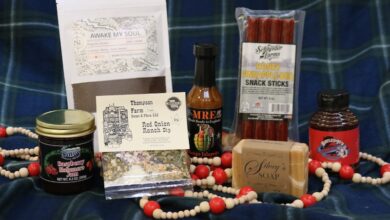Bees are making a comeback in Missouri
The backyard conservation efforts of Missourians are contributing to the comeback of bees across the state. The state has announced that the focus on more native plants and other efforts are helping the insects thrive.
Preliminary data from a study conducted by the Missouri Department of Conservation, the University of Missouri, Quail Forever and the Xerces Society shows encouraging news concerning bees and their habitats after studies previously found their survival under threat.
Between June and September, hundreds of volunteers across the state observed more than 1,600 samples of bees. To their surprise, the research contained some findings that showed backyard and other conservation efforts are working.
The American bumble bee, which is up for consideration to be on the List of Endangered and Threatened Wildlife and Plants, was commonly found in the study.
Not only that, but a species of bee that was thought to no longer exist in Missouri was found. Four specimens of the half-black bumble bee were observed during the study.
The researchers found that in the areas where there is a diversity of native plants, native bee populations will thrive. Bill White, branch chief for community and private land at the conservation department, said preliminary data from the study shows that 70-80% of the plants that were collecting bumble bees were native.
While planting native wildflowers like hostas, crape myrtle and bee balm will promote bee life in the spring and summer months, Missouri residents can also employ techniques over the winter months in order to keep the bee population growing.
White had a few pieces of advice.
First, he said that many native bees are nesting now and that several species lay their larvae in the stems of plants.
“If you’re removing the stems, you’re probably removing the bee larvae,” he said. If so, the larvae likely won’t be able to survive the winter and grow into fully fledged bees. White said to look out for any plants with a thick, upright stem like milkweed, asters and goldenrod.
In addition, White said that leaving piles of leaves alone could be one of the best choices when it comes to promoting bee life. Bumble bees have brand new queens produced over the winter in the soil, sometimes under these piles.
“The queen and her health is the center of keeping the population sustainable and/or growing,” White said.
The official data report will be released sometime in November.
White said that the department will try to do the survey next year, too. Those who would like to volunteer will be able to receive information from the Facebook Group “MO Bumble Bee Atlas.” Training for volunteers would likely take place in May 2022.
–Wire services







